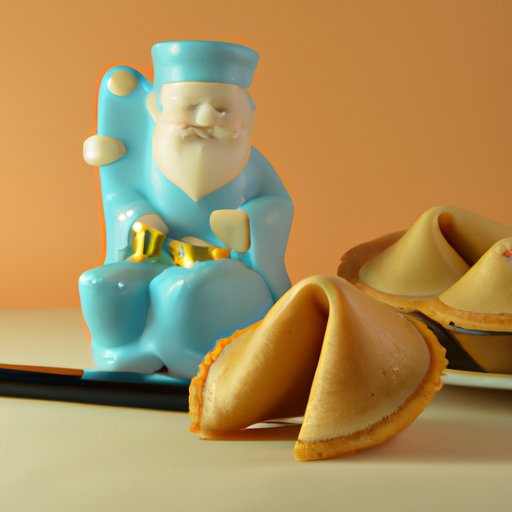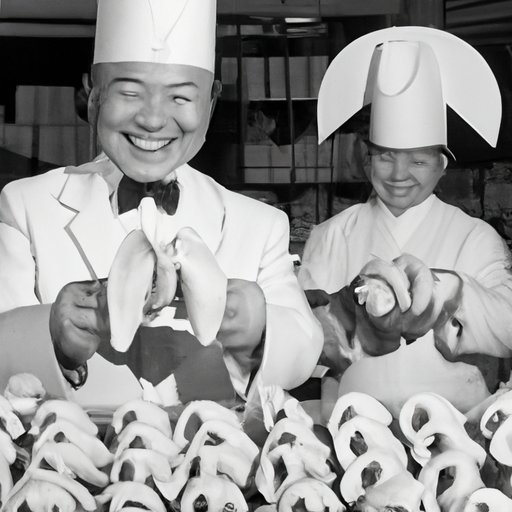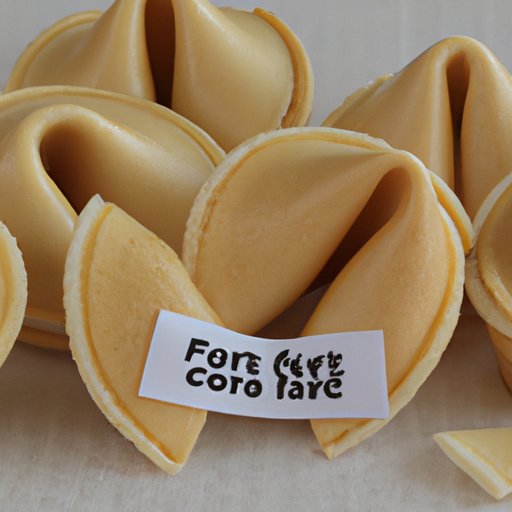Introduction
Fortune cookies are an iconic part of Chinese cuisine, found in many restaurants around the world. Sweet, crisp, and filled with a surprise message, these treats have become a beloved snack for millions of people. But where did fortune cookies come from, and who invented them? Let’s explore the mysterious history behind this popular treat.

A Historical Look at the Invention of Fortune Cookies
The origin of fortune cookies is a bit of a mystery. The earliest known reference to fortune cookies dates back to the late 19th century in China. According to Food: A Cultural Culinary History, “the first known reference to a cookie containing a message was made by a Chinese scholar in the late nineteenth century.” However, there is no evidence that these cookies were popular or widely available in China at the time.
The development of fortune cookies is more closely linked to Japan. During the late 19th century, Japanese immigrants began settling in California and brought their own version of the fortune cookie with them. These cookies were known as tsujiura senbei and were made from a batter of flour, sugar, sesame, and miso. This type of cookie was served at temples and shrines in Japan, often with a paper fortune inside.

Discovering the Inventor Behind Fortune Cookies
One of the most important figures in the development of fortune cookies is Makoto Hagiwara. Hagiwara was a Japanese immigrant who moved to San Francisco in 1887. He was commissioned to design and construct the Japanese Tea Garden in Golden Gate Park, which opened in 1894. It was here that he began serving his tsujiura senbei cookies with a paper fortune inside.
Hagiwara’s role in bringing fortune cookies to America has been disputed over the years, but some believe that he is responsible for introducing the modern version of the fortune cookie. According to The Fortune Cookie Chronicles, “Makoto Hagiwara is credited with introducing the modern-day version of the fortune cookie to the United States.”

How a Japanese Immigrant Brought Fortune Cookies to America
Another key figure in the invention of fortune cookies is David Jung. Jung was a Chinese immigrant who founded the Hong Kong Noodle Company in Los Angeles in 1918. According to the company’s website, Jung started producing fortune cookies in order to “spread a message of faith, hope, and luck” to those living in the city. His fortune cookies quickly became popular, and soon they were being served in Chinese restaurants throughout the United States.
Jung’s invention of the American fortune cookie is credited with making the treat popular around the world. According to The Fortune Cookie Chronicles, “David Jung’s invention of the American fortune cookie made the treat popular around the world.”
The Surprising Origins of Fortune Cookies
The fortunes found inside fortune cookies can be traced back to the Japanese tradition of omikuji. Omikuji are strips of paper inscribed with a message from a Buddhist monk. The messages are meant to bring good luck or offer advice to those who read them. It is believed that Makoto Hagiwara was inspired by this tradition when he began placing paper fortunes inside his tsujiura senbei cookies.
The origins of the actual fortunes are a bit of a mystery. According to The Fortune Cookie Chronicles, “it is unclear who wrote the original fortunes found in fortune cookies.” Some believe that Makoto Hagiwara wrote the fortunes himself, while others believe that they were written by a group of Chinese immigrants. To this day, the identity of the fortune writer remains a mystery.
Exploring the Mysterious History of Fortune Cookies
Today, fortune cookies are a beloved treat enjoyed by many around the world. But their origins remain shrouded in mystery. There are many legends that surround the invention of fortune cookies, including stories of ancient Chinese emperors and Japanese monks. While these stories may be entertaining, the true history of fortune cookies is much more interesting.
The popularity of fortune cookies today is a testament to the ingenuity of Makoto Hagiwara and David Jung. By combining the traditions of both Japan and China, they created a treat that has become a beloved snack for millions of people. As we enjoy our fortune cookies, let us remember the fascinating story behind this popular treat.
Conclusion
The invention of fortune cookies is a fascinating story of two cultures coming together. While the exact origins of fortune cookies remain a mystery, we can thank Makoto Hagiwara and David Jung for introducing us to this beloved treat. From the symbolic meaning of the fortunes to the legends that surround them, fortune cookies are a unique and enduring part of our culture.
(Note: Is this article not meeting your expectations? Do you have knowledge or insights to share? Unlock new opportunities and expand your reach by joining our authors team. Click Registration to join us and share your expertise with our readers.)
